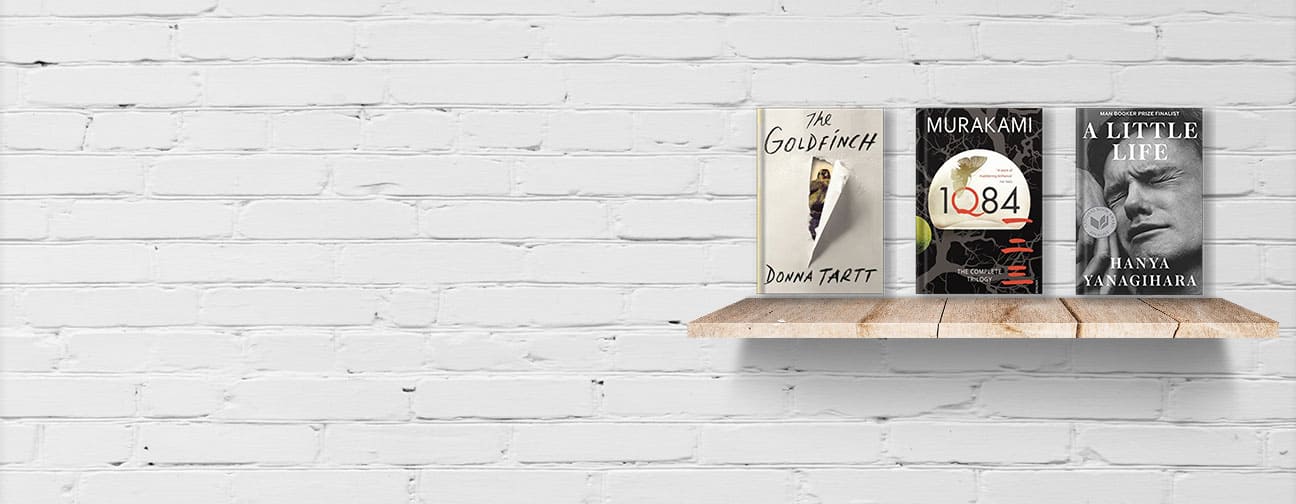Imagine it’s fifth grade, your English language teacher instructs you to write a page-turner, and your class fellows fill sheets while you ponder.
Sounds awful.
We’ve all been there.
When you have a creative mind, Pixar movies are your inspiration; how did they think of this concept? Who must have written it? How can something be fictional yet cause an emotional impact?
How to start a story that doesn’t bend your reader’s heads but lets them dive into the theory behind it?
Let’s get anecdotal in this blog. You can expect the following:
- Ways to start a story
- Storytelling and writing
- Parts and elements of fiction
- Theme, concept, and statement
- Arts of expression
Sit under a lamp because you are about to learn the best ways to start stories:

1. How to Start off a Story
Every writer struggles to figure out how to write a story beginning that catches the maximum attention of the readers. We might be able to provide you with some. If you want to know a few how to start a story examples, we are stirring that pot below:
● Hi, my name is…
Many writers enjoy introducing the protagonist through the back door.
One of the most exciting ways to begin a story,
Readers are always left with an option to explore the plot or leave the main character alone on page one. So, you may go all Taylor Greer from The Bean Trees and see a trail of readers hopping up behind you.
Now, how was their name given to them? What’s their nick? What got them emotional? Found your pick?
By bringing relatability to your story, you have the reader stuck in an imaginative loop.
● The Big Bang
One of the few good ways to start stories involves backstories. Every bookworm digs character backstories to associate them with upcoming events and behaviors. It gives you a chance to phase in accessibility to the character’s creative plot.
Jane Austen dragged all bachelorettes’ attention when she wrote,
‘It is a truth universally acknowledged that a single man in possession of a good fortune must be in want of a wife.’
Who is the single man? Who will become the wife? Good fortune? Will they meet dramatically, or is this not the fairytale of our dreams?
Sounds Interesting!
If you go for one of these ways to start off a story, you will most likely keep the story between the ditches. The reader would demand the ‘when’ and ‘what’ of your story, which will be hidden till the end. At one point, the reader gets jammed between reading ahead or leaving halfway.
Chances are, they’d read ahead. The backstory is the spoonful of sugar that will help the medicine go down.
● Jack’s Beanstalk
Wait, are you trading your creative cow for some beans of filler words? Jack fell into great trouble after it.
Do this instead:
Stories require a lot of world-building because of their unreal background. This doesn’t mean you throw words in the cookpot and expect world-class stew. J.K. Rowling constructed an empire over fiction.
The holding pattern to your jet is the unknowns and their introduction to the story. With this concrete imagery, the reader focuses on clinging on to prevent going off the narrative.
● Now, where to begin?
Calling out all Sherlock fans!
The ways to start a story also require some mysterious elements. Jumbling the introduction and knocking on a cocked hat can trick the reader’s mind.
Still confused?
Remember Desert Star? Michael Connelly connected it with one of the best crime stories. You must be sure about the mystery that needs conveyance, not the path that conveys it. Begin by undrawing the curtains from a painful, haunted, or nerve-wracking scene. Eight chapters later, your reader will question what brought them this far without losing interest for even a minute.
● Women, They Have Minds…
Like Jo March from Little Women, a strong narrational voice can solve up to 99% of your problems. As unaltered and skeptical as your character sounds, the readers won’t wait to fiddle when Rome burns.
Here’s the catch:
As honest, direct, and relevant as the narrational tone is, it becomes easier to reveal personality and make the character sound self-aware. Readers appreciate a focused character rather than preoccupation with baseless narratives that beat around the bush.
2. Notebook, Pen, and Action
Scenes and Narration
How to begin a story that is particular about the narratives and scenes?
Easy.
If you dive deep into character, place, or article description, you are being scenic. It involves delicate imagery like the stopper behind an earring.
Contrarily, the stories are fast-paced. While keeping your hands on the wheel, you must keep changing lanes. At some points, you will steer clear on the fast track, while other times might require you to park and wait.
So, buckle down on the significant events in the beginning, and adhere to the top of the earring. Only bring forth the stopper when you start hunkering down on narration.
Synopsis of Notion
The best way to start a story comes off as a collection of descriptive and narrative plots. Some stories begin with one scene, go about it a little, and end there. As vague as that sounds, there are ways to bat away any boredom associated with them.
But what is a good work of fiction?
In a hustling bookstore or fair, you will never grab a book that is narratively brain-cramping fiction. You’d instead go for something that hooks you in with its ease of understanding right at the beginning, so get right to the point.
Give the reader what they want to know, i.e., the plot, direction, and genre, strategically in the first few lines.
Master of Spheres
How do you start a story that must speak to readers of all ages and interests? Stick to the conflict.
Have you imagined what your opening reads as?
Good.
Now open yourself—and your potentially brilliant idea—up to self-critique. Ask the all-important question: What doesn’t work in it? Remember, a good formula is: the opening should be determined, altered, edited, and re-determined before being jotted down.
It requires a strong knowledge of your characters, their introduction, interests, and developments. Keeping your sections a mystery can result in an opening that requires redrafting every time you pace with a twist.
You can seek help from professional writers and ghostwriters to forestall a story plan and then go about it.
Figurative Expression
If you are still unclear on how to start off a story, appreciate the different elements of fantasy. What will keep your readers in the swim of your concept? Any figurative expression that aids your readers’ imagination metaphorically can go hand in hand with readability.
For example:
Unfold your characters’ inner battles and conflicts in the beginning to allow your readers a one-note. Currently, your readers are perceiving what they see – as defined by your visualization.
Immediately introduce an exciting disagreement and make way for your readers to sit on the fence. Now, they are bound to look closely at the contradicting statements. At this crucial moment, avoid repetition to structure focus.
Sew the View
Most writers trip on the good ways to start a story because they disregard thematic statements. Although your mileage may vary in the journey, you shouldn’t forget the purpose.
How about we tell you there is a way out?
Sit with experienced writers and present your manuscript. Touch on the sections that lack connections so they can compile and decide for you. Subsequently, you’ll see eye to eye with their suggestions about the opening and the body of your concept.
If you are still unclear, prepare your manuscript, then pass the ball to the court of experts. It is the easiest way to learn and polish your skills.
Voice of Wilderness
Many writers confuse the art of composing with the run of becoming a great storyteller.
The best way to start a story that writes your ticket to success is to focus. Artistic expressions are tedious for habitual readers—especially if there is a lot of abstraction and only a little bit of clarity. It drags the thesis of the book and leaves behind mere raw sentences—fluff if you will.
Remember: crazing in pottery is noticeable to those who are aware of polishing. An avid reader will see right through the superfluous language and focus on the missing heart of your content.
So, if you are planning to begin by dashing down that great piece of fiction in your head, stop and reconsider.

3. Art Imitating Art
How to begin a story that speaks of art in every following line? Forget about the lines.
Doubtful?
Ask yourself. Do you know why you are writing this story? Paste it in front of the desk you work on. Is it a logline involving a pitch or a mere premise?
Whenever you struggle with the beginning, dive into the internal dispute of the characters. So, when someone reads the opening lines, they look at the clickbait rather than a dubious plot. If you want your book to define you as an author, work on the patterns that intrigue the book critics and reviewers into reading your piece.
Include your theme on the first page. Then think of the rest of the book as an excellent summary of your opening.
Conflicts of Interest
The good ways to start a story come with either of the two sets of conflicts—internal or external.
Why bother about it either way?
A writer who changes tunes with respect to the turmoil and struggles of the main character leaves a long-lasting impression on the readers’ lives. Readers are desperate to find a story that begins with a clue to their internal conflicts.
A good opening normalizes a condition of the human mind, character, resilience, or virtue that requires upfront resolution.
That, for you, is the thematic statement.
4. Fictional Chestnut
Argumentum
What happens in your story? The answer to this question should not be more than 150 words.
Why?
It describes the external conflict and leaves room for the questioner to confirm it with the opening without getting hacked off.
It stands in the way of success, happiness, and self-recognition. Something that makes the readers empathize with the character’s goals.
A mellow of setbacks.
Leitmotif—the melody of sub-stories
The ways to start off a story go through the sub-stories. Be very careful not to torque off the reader with a sensitive subject. Show an unpoised picture of the fundamental concept. Make the readers feel pitiful for the side character or antagonist until page two presents the high note.
Resolve the unconcerned dispute, in the beginning, to leave room for a new one.
However, to grow relevance, remind the reader of its emotional impact on the protagonist. Fath, loyalty, and trust are the best emotions to begin a story.
Why?
Many readers escape the hardships in life by linking with fictional characters. Make sure yours has a lot to offer than just a fairytale full of expectations and demands.
Pigs Might Fly
If you are about to write about a terrible accident, do not linger around the appalling bus ride. Readers are trying to pick up the concept in the first few lines. Even if they take your book home, making them read requires addressing their expectations.
Imagine your reader begins marching to the beat of a drum, and you start playing violin for the following 85 pages.
Now, because you are halfway through, you will lose the plot, concept, and probably the entire storyline because of it. Why? Because you didn’t emphasize the subject at the beginning. If you think the opening is just a clickbait, you might be in the same boat that goes down the waterfall.
Vaughan’s, in this case, perhaps?
Ballpark Figure
Now that we are between the decision of proceeding or heading back going back to the question,
How to begin a story?
Have you figured this one out? Do you know the difference between the plot and theme of your story?
Plots will lead to conclusions of relevant or irrelevant external conflicts. At the same time, the theme will figure up the message from internal disputes and polish the pottery for us.
Currently, you are looking at the requirement of having your manuscript read by professional writers, freelancers, or ghostwriters. Preparing for the ups and downs is always safer before ducking or braving out.
Eke Of Words
Sometimes before writing a story, your mind map overflows. Then, several ideas, themes, and conflicts game out. At that point, sit and contemplate.
What is the major issue? Are the side stories weighing up in the silk purse? How about connecting the outcomes of all and creating a direction?
Sounds difficult?
At least it’s not a crime. But for writers, it’s a crime of concept. Here, you leave the artistic perspective out and map the day aesthetically. Now, your story begins out of the fire. It has more elements than a continuation. Every next chapter you tell will have its theme, scattering pins and needles everywhere.
Why do books come in parts? Ever thought, why must a writer produce sequels? Because a good opening and intriguing story open doors to other ones. You began reading like your audience and finding the questions that require answers ahead.
That’s when you know you’re on the right track.
Sometimes, an internal conflict allows you to open five more parts addressing external conflicts that rolled in the same basket. Excessive life lessons in the same book can be mistaken as ‘self-help,’ which kills the purpose of strategic storytelling.
Titrating the advice with a mix of humor and excitement makes learning more accessible in all settings. Being chased by antagonists, the protagonist should also live life to the fullest. They must showcase the need for satire in the worst situations. All in all, it adds to the impact.
Myriad of Themes
How do you start a story that might have more than one theme? A theme works like a hypothesis of research papers. The roots of which lie in the depths of the internal conflict. One conflict can house several ideas and concepts. These might require vigorous explanation, while other times, a line-long definition.
Begin by announcing with one theme only. Skip the wild-goose chase for all the involved themes and cast about a centralized concept.
● Dredge Up
On page one, the reader must see the concept of your book as clearly as you dreamed it. If it is purely fictional, there should not be any retaliation. Squirreling around with rich vocabulary with no purpose will end your book at the back of the shelves.
Remember, your theme stays incomplete if your story doesn’t come back to the opening at the end—open at the close, anyone?
● Thematic Conceptualization
What is the meaning of thematic conceptualization, and how to fix it in the first few paragraphs of your story?
The same that distinguishes resentment from the excuse, pique from composure, and perfidiousness from loyalty. These are the two ways to see a picture—describing it through senses and losing all senses trying to describe it.
● Epilogue
When the road trip ends, the drive back home is quiet. Then why is your story still noisy? Are you returning to square one, or have you climbed a different road?
The epilogue should never turn into a regret of side stories you wished you could’ve summed up. It happens when you do not cling to the beginning and the concept provided in it. Therefore, it has a scar when you finally remove the bandage from the protagonist’s wounds.
● Dramatis Personae
This section is self-explanatory. If you have the right idea of the length of your story, divide the words in accordance with the need for setting and character development. Do not play around because one misstep and your manuscript turn into flash fiction.
● Finesse
Narration or writing style is selected in the first few words. Depending on the concept of your story, you can choose the tenses and recitation. Conversing and rehearsing the dialogues is a great way to check which way sounds apt.
Then, ask for opinions. What you miss out on might cringe the other. Once done, you can set the tone, voice, POV, diction, etc.
You can’t jump out of this loop.

5. Mimesis and Diegesis
Remember show and tells from childhood? Everyone wanted to stand out.
Despite what your classmate brought, you’d always be appreciated for your pick. Why? Faith. Every writer has confidence in their capabilities to write and conceptualize idea that doesn’t let them sleep at night.
However, we require the subtle knowledge of Mimesis (to show) and Diegesis (to tell). What was the purpose behind switching places? Let’s find out:
Mimesis
This is a representation of reality in literature where the author will show rather than tell—it is also a widely popular concept in movies where flashbacks are used instead of narrations to delve into plot lines.
Diegesis
The storyteller tells the tale. Here, the narrator describes thoughts and actions that the audience must emphasize. For the longest, diegetic building blocks have pillared for the fictional world to represent a story. Stylistic elements, however, stage out the storytelling phenomenon.
Diegesis filters out the action potential in a story. So, from the start of a story, there is an authoritative touch.
It is an excellent cue to the voice of the writer. Many readers can decipher the dialect of the author from diegesis.
Therefore, begin writing a story with an emphasis on diegesis.
Mimesis Vs. Diegesis
If you want to start a book by showing more than talking about a specific concept, that’s Mimesis. This way, your means of action is sanctioned fully. Though, if your story was begun by a narrator, you will require a particular character, invisibility, and an omniscient tone to justify a diegetic tone.
Your narrator speaks from the Outside.
Therefore, these sound more like comments on the characters’ choices, actions, and preferences. It’s a great way to make your audience opinionated without any action.
Presently, you are toggling between the options to stay with or without the filter of opinions. So, to justify an opening by finding it good or bad is a misnomer because the variable choices of diegesis and mimesis tone out the style of your book.
If you start a story with diegesis, there is a pervasion of all aspects of storytelling. It is visible and unignorable.
What is the downside to a diegetic story?
The plot paces faster in the stylism and slows way too down in the concepts. This irregularity can get a tad bit annoying for the readers.
6. …And Finally
If you have reached this far, you are most likely looking for a few tips to finalize your set of advice.
Bear in mind,
You can be a great writer and still be an awful storyteller. And how is that? Every expression comes with its beauty. Literary expressions set directions for the readers. This answers the most famous question,
‘Why was their piece better than mine?’
When you craft a story, ensure you are hiking on this mountain with the right does on. These shoes, when put on from the beginning, will only take you up with no constraints. Hence, if you’re planning to write a book with an excellent opening, find the right shoes.
Castles in the Air
Any story that shows the six elements of fiction can win. But not every story has an opening line printed in newspapers and gets metaphorical recognition.
If you think you are great at storytelling,
Jot down the plan about all the good ways to start a story. Start with the summary of the plot. Jump on the theme – in a word or two. Next, describe the concept. From this point onwards, select the statement for the theme.
You are first left with the setting—including the place, time, location, and spot. Then, the characters. Be very peculiar about relating, selecting, and describing the characters in this section beforehand.
This leads you to the final part of the plan,
Conflict, style, voice, tone, and POV. You might want to stay in this section for a bit longer. Sometimes, writers prepare manuscripts and then consult ghostwriting services to devise a plan for them, which works well, too. The story plan then helps figure out the plot holes.
Winding Up
Let’s go back to the playball and check if we answered:
How to begin a story?
Writing a good story is not as simple as bestselling authors say in their press releases. But it is not impossible either. To avoid discrepancies, choose the characters, themes, and scenes judiciously.
Once done, get focused on the narrative direction.
Unpacking your character’s turmoil in the opening can sound distressing. Making it look interesting sounds even worse. Experiment with different openings and seek advice. You are always searching in the vicinity of the treasure, sometimes with the wrong team.
Find a company that uplifts you to write, delete, and have the confidence to write again, better. This way, your story will become a referential resource to many others in the same genre.
Never stop believing; sometimes, the best stories are pen-downed amidst the worst situations. If you want your draft to stand out, make sure it is something you pick from the bookshelves amid a hundred options.






